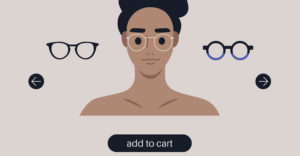Despite increased spending by many businesses, 2025 looks like a lackluster year for customer experience (CX) quality, according to Forrester Research.
“For most brands, 2025 will be another year of CX mediocrity following years of decline and an all-time low in quality in 2024,” Forrester predicts. “That’s because many executives mistakenly interpret strong stock performance amid declining CX quality as a sign to scale back CX efforts.”
“These execs are gambling that their competitors will make the same decision,” it continued, “instead of seizing the moment to differentiate by improving on foundational CX abilities that other companies have neglected.”
While many executives may be mulling cuts in CX, others are choosing to pump more money into enhancing their customers’ experience. In Forrester’s planning guidance for CX released in August, it noted that CX leaders were cautiously optimistic about their resources as they try to reverse declines in CX quality, with 40% planning to increase their overall CX investments above inflation levels in the next 12 months.
According to Forrester’s “2024 US Customer Experience Index” rankings released in June, CX quality among brands in the United States sits at an all-time low after declining for an unprecedented third year in a row.
The research firm cited several factors for the decline, including brands’ inability to provide seamless customer and employee experiences, underwhelming digital experiences using chatbots, and consumers’ concerns about their personal financial situations, society, and the economy at large.
Forrester researchers also found that only 3% of companies could be categorized as customer-obsessed — defined as putting customers’ needs, desires, and satisfaction at the forefront of all business decisions and actions — although customer-obsessed organizations have reported 41% faster revenue growth, 49% faster profit growth, and 51% better customer retention than non-customer-obsessed organizations.
How the Pandemic Reshaped CX Standards
The decline of CX quality and the rise of consumer expectations about that quality have roots in the Covid-19 pandemic.
“The pandemic reduced expectations for CX from the buyer side, but at the same time, it tended to lead management to believe that they could provide less service and still sell product, which was true when expectations were low,” said Anthony Miyazaki, a professor of marketing at Florida International University, in Miami.
“The problem with this is that post-pandemic, buyer expectations began to return to normal levels at a pace faster than that of actual service provision,” he told CRM Buyer.
John Nash, chief marketing and strategy officer at Redpoint Global, a global customer data platform and engagement strategy provider, explained that the pandemic accelerated consumer expectations for seamless, personalized experiences where a brand demonstrates a personal understanding of them as a customer.
“In a post-pandemic McKinsey survey,” he told CRM Buyer, “75% of consumers said that they tried a new shopping behavior during the pandemic, with 71% of consumers reporting that they now expect personalization and 76% saying they are frustrated when they don’t find it.”
The pandemic was a major disruptor for CX, forcing companies to rapidly adapt to an unpredictable environment, observed Craig Crisler, CEO of SupportNinja, a provider of customized outsourcing solutions in Dallas. “With in-person interactions restricted, customers shifted almost entirely to digital channels, which put immense pressure on CX teams to deliver consistent, responsive support online,” he told CRM Buyer.
“Companies scrambled to build out digital infrastructure, sometimes at the expense of quality, just to keep up with demand,” he continued. “As a result, many organizations exposed gaps in their CX strategy, particularly around flexibility and resilience.”
It also amplified the gaps between stated strategy and operational actions, especially in frontline CX functions like service and contact centers.
“While the headlines, corporate mission statements, and earnings calls were touting an age of empathy in experience, where we were ‘all in it together,’ contact centers were pulled in two opposing directions,” explained Liz Miller, vice president and a principal analyst with Constellation Research, a technology research and advisory firm in Cupertino, Calif.
“There were metrics and operational expectations for shortened call times, call deflections, and accelerated issue remediation, which often demanded truncated calls, abrupt resolutions, and just trying to get a person on the other end of the line off a call as efficiently and quickly as possible,” she told CRM Buyer. “There is little room for empathy in a call time metric.”
Social Media and the Rise in CX Expectations
Increased customer expectations following the pandemic have also impacted CX quality. “Rising customer expectations have completely reshaped the CX landscape,” Crisler said. “Today’s customers demand more than just fast or accurate service. They expect brands to anticipate their needs, personalize interactions, and create frictionless experiences across every channel.”
“This heightened expectation puts pressure on CX teams to be proactive and deeply informed, using data and insights to create a journey that feels intuitive and personalized from the first interaction,” he continued. “For companies, this means CX can no longer be reactive or operate in silos. It must be a dynamic, data-driven part of the entire customer lifecycle.”
“Customers more and more expect frictionless and prompt responses from the vendors they frequent,” added Micah Solomon, a customer experience consultant based in Seattle.
“Integration between human and tech-supplied customer service is a must, as is the quality and thoughtfulness of the technology systems deployed,” he told CRM Buyer.
Social media has also played a role in the rise in consumer expectations. “The continued onslaught of CX-related social media posting also is influencing buyer expectations, particularly for younger audiences,” Miyazaki said.
“Extreme complaining behavior has been normalized to some degree by content creators who, at times, fabricate customer service failures solely for the purpose of gaining views and engagement on social media. This tends to train social media viewers in believing that high levels of service are the norm irrespective of the price point at which they’re paying for service quality.”
“These types of encounters — whether filmed for social clout or not — tend to put undue pressure on frontline personnel and affect the customer experience for all involved,” he continued. “Meanwhile, management is under pressure to fix issues despite having reduced resources to invest in long-term solutions.”
The Double-Edged Sword of Self-Service and AI in CX
Another influencer of CX quality has been self-service and the rise of artificial intelligence. “Self-service tools have streamlined CX by empowering customers to find answers on their own terms, which is convenient for straightforward or frequent inquiries,” Crisler said.
“However, for complex, high-stakes, or emotionally charged issues, self-service can fall short, leaving customers frustrated. AI may intensify this impact if organizations rely on it too heavily without ensuring that it complements, rather than replaces, human support.”
“When applied thoughtfully, AI can enhance CX by enabling faster responses and predictive assistance, but it should be part of a balanced approach,” he continued. “Routine tasks and high-volume inquiries are well-suited to self-service and AI, while more complex issues benefit from the human touch.”
“By blending self-service tools with easily accessible human support, organizations can create a CX experience that’s both efficient and empathetic, ensuring customers feel valued and understood, not just processed through a system,” he added.
Miyazaki noted that self-service tools have dual effects on perceived customer experiences. “When they work well, they allow customers to complete their tasks without issue and result in a positive encounter,” he said. “But when self-service tools fail, customers tend to become frustrated because resolving an issue now requires an additional step involving humans who may or may not be able to provide immediate solutions.”
“AI, specifically agentic AI, may actually result in higher CX quality when it begins to reach maturity,” he added. “This is because agentic AI will be empowered with unlimited branched decision making based on large datasets and will use pattern recognition and associative learning to build solutions and communications that it creates specifically to satisfy the focal customer.”
Reaching Beyond FAQs to Knowledge Hubs
Edward Tian, CEO of GPTZero, maker of an AI detection platform in Arlington, Va., pointed out that when it comes to the customer experience, it’s important to remember it includes all interactions and experiences a person has with a company, not just direct customer service interactions. “If a person goes to a website and uses its AI chatbot, that chatbot becomes a big part of their CX,” he told CRM Buyer.
“As AI becomes more heavily ingrained in websites, it is likely that it will only increase how much of an impact self-service tools have on CX,” he added.
Miller noted that consumers are more than happy to traverse down a self-service experience if they see value in the service. “They won’t go down that path again if they fail to see value, have a negative experience, or feel forced into an experience that did not actually meet their needs or expectations,” she said. “While people are typically willing to give people a second chance, they are far less likely to give those self-service bots a pass on a bad outcome.”
She predicted that 2025 will be a year where all eyes will turn to “knowledge.” “The challenge will be how that knowledge is defined, what data is considered to be part of that knowledge graph, and what new sources and resources can be translated into data to truly make knowledge the ultimate hub for CX delivery and optimization,” she said.
“Knowledge in 2025 won’t just be that FAQ bank of answers,” she added. “It will even extend beyond ingesting known content sources to use tricks like gen AI to create new answers.”
CX as a Company-Wide Ethos
Anyone in the data collection business, however, must be mindful of their customers’ privacy, cautioned David McInerney, commercial manager for data privacy at Cassie, a consent and preference management platform, in the U.K. “They need to establish clear data usage policies, obtain explicit user consent, and conduct regular audits to ensure data is handled responsibly and ethically,” he told CRM Buyer.
“As consent fatigue continues growing, with consumers getting fed up with multiple requests even in one single journey, businesses need to make privacy a seamless part of the customer experience so that they can compliantly gather data in 2025,” he said.
Expect an increased focus on ethical AI, where customer data privacy and transparency are prioritized, Crisler added. “Companies that want to build trust will need to be clear with customers about how their data is used and ensure that AI is applied responsibly,” he maintained.
“Flexible CX models that can scale in response to changing customer expectations will be key, with a growing reliance on agile staffing solutions, including outsourcing, to support this adaptability without compromising quality.”
“In 2025, CX won’t just be a function — it’s going to be your entire company,” he declared. “It’ll be the DNA of successful companies. Every touchpoint, every employee, and every decision will have to center around the customer. Brands that don’t treat CX like their company’s central nervous system are going to struggle.”
“In short, 2025 will be the year CX transforms from a department to a company-wide ethos, with every part of the organization playing a role in delivering seamless, empathetic, and personalized customer experiences,” he predicted.























































